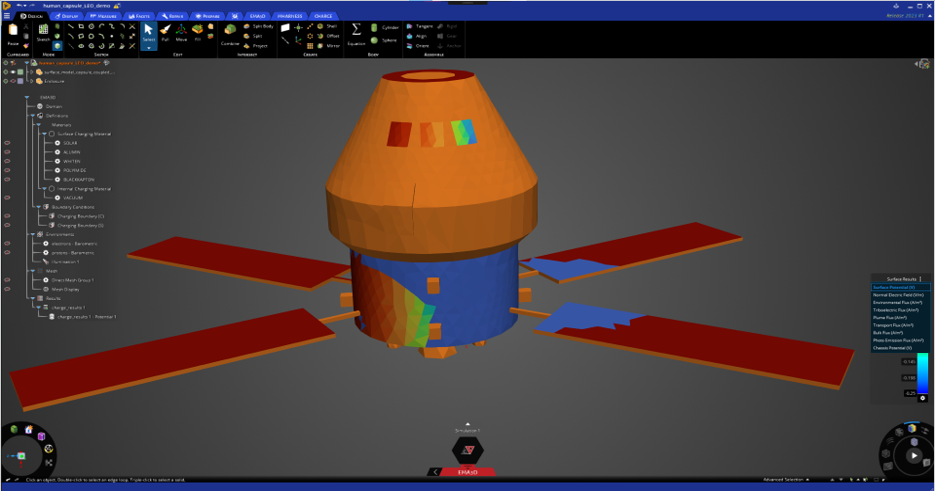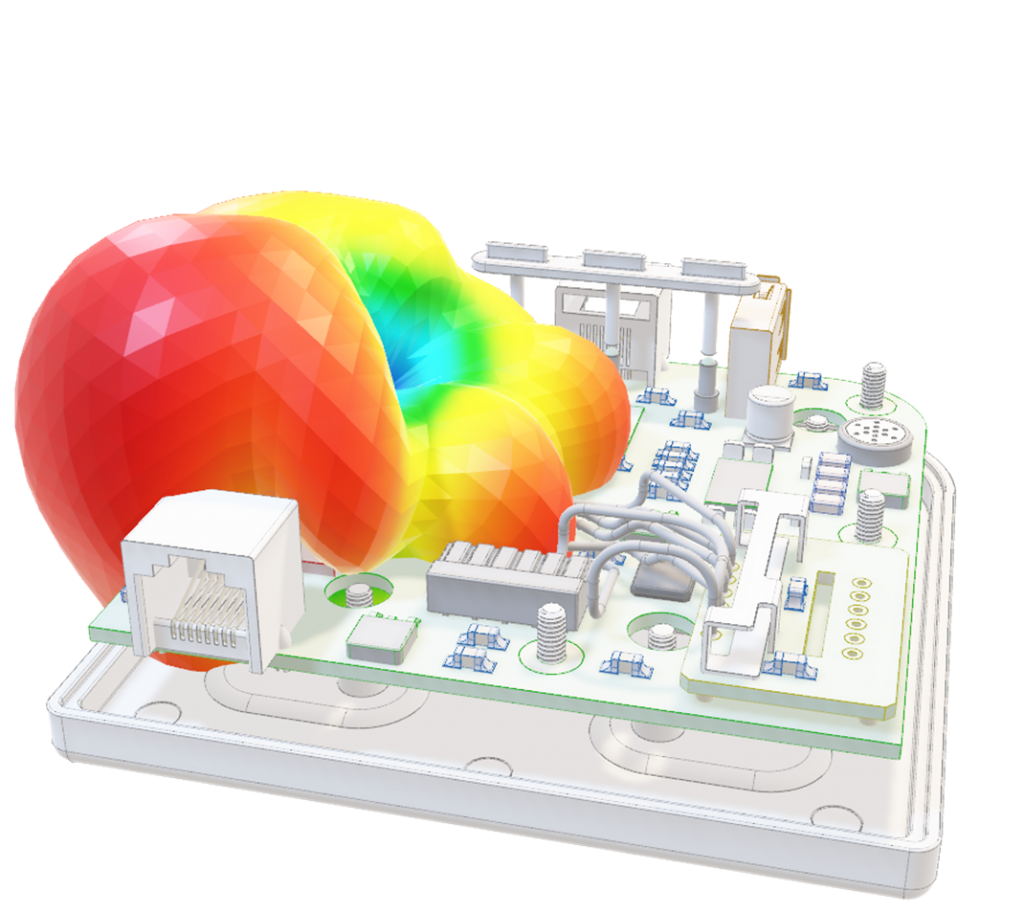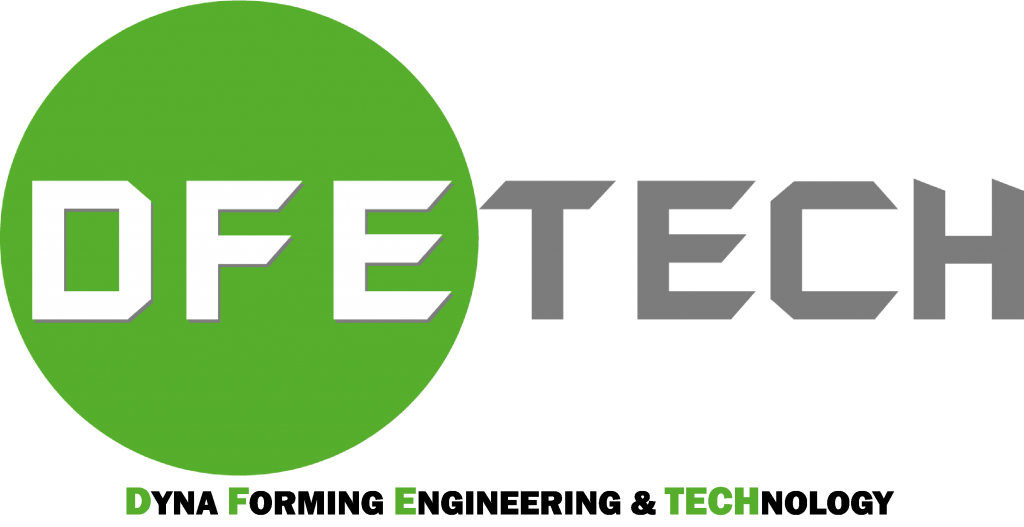Ansys 2023R1 is Released!

Ansys 2023 R1 enables engineering teams to handle the complex challenges required to develop the next generation of world-changing products. Advances in product design drive the ability to replicate the behavior of complex systems so you can find novel solutions. The new products, technologies, and tools that make up 2023 R1 enable engineering teams to examine products and systems rigorously under varying conditions. Simulation allows stakeholders to expand their knowledge and optimize designs at every stage of the product development process.
Buttons below will lead you to ANSYS 2023R1 updates session in different Ansys product families:
STRUCTURAL
In 2023 R1, the Structures Product Line delivers new features and capabilities that allow our users to perform more accurate, efficient, and customizable simulation analyses, including:
- An AI/ML Resource Prediction feature to provide estimates on expected solve time and memory usage required to solve an Ansys Mechanical simulation.
- Efficiently modify a CAD model, without losing the associativity of the model’s features after setup, using geometry-based re-associativity with the Scoping Wizard that detects and reestablishes scoping in Mechanical.
- Improvements to LS-DYNA Incompressible Smooth Particle Hydrodynamics (ISPH) for improved data processing, better visualization, data transfer to Mechanical and Fluent, and more.
- Comprehensive battery safety workflow in LS-DYNA simulates thermal runaway following thermal and mechanical abuse. Predict the combined structural, electrical, electrochemical, and thermal (EET) responses of automotive batteries – validated through experiments.
- Enhancements to the Ansys Sherlock parts library include over 400,000 new parts added, allowing users to build more accurate models for analysis. Additionally, improved integrations between Sherlock, Mechanical & Icepak include the ability to handle multiple PCB assemblies for motherboard or daughter board applications.
Ansys Mechanical
- Efficiently modify a CAD model, without losing the associativity of the model’s features after setup, using geometry-based re-associativity with the Scoping Wizard that detects and reestablishes scoping.
- Gain insight into the computational resources required to solve a simulation, including expected solve time and memory usage, by using the AI/ML powered Resource Prediction feature that leverages millions of data points from previously solved models.
- Improve simulation accuracy when solving complex models and parts with geometry preserving adaptivity, that automatically refines a mesh for better resolution of stresses and strains on intricate features. Mesh adaptivity is done on the initial CAD geometry and eliminates the need for an over refined initial mesh, and takes out the guess work on mesh sizing for durability studies.
- Optimization of frame and shell structures can now be performed using a new topography optimization method that improves structural durability of the component while minimizing mass.
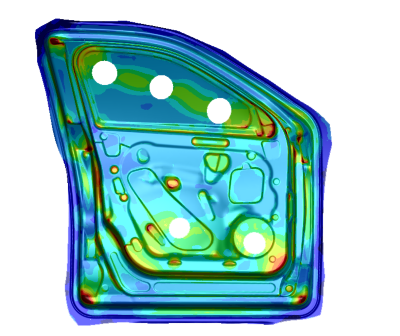
- Efficiently setup contacts for complex models, like contact between adhesives and metal sheet components common in Body in White (BIW) durability models, with an improved and simplified setup method. This new method removes the need for duplicate contact setup and book-keeping of top/bottom faces of sheet bodies, drastically reducing setup time.
- Generate a higher quality mesh that meets your criteria the first time, with improvements including: tetrahedral meshes for drop test simulations and feature suppression, swept hexahedral meshes and meshes for welds and shells, as well as general usability improvements.
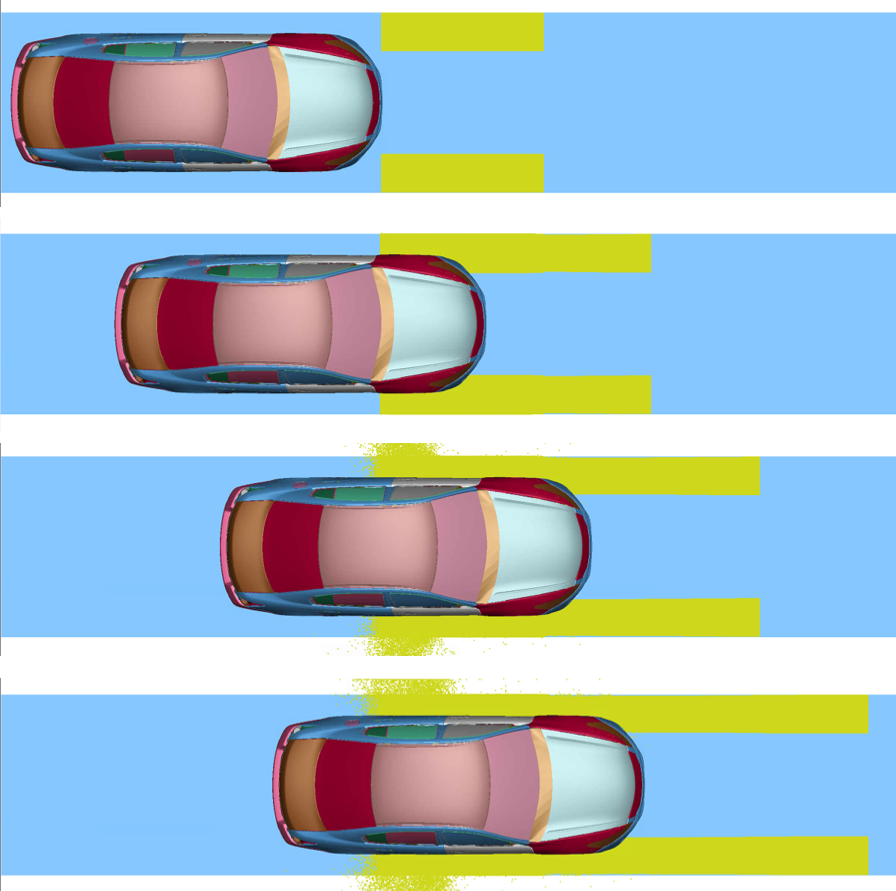
Ansys LS-DYNA
- Improvements to Incompressible Smooth Particle Hydrodynamics (ISPH) includes: a new utility tool to process SpaceClaim data, better visualization, ability to record time history of FSI forces, removal of volume constrained resources (e.g., gearbox analysis), heat transfer coefficient (HTC) calculation for import to Mechanical and Fluent for thermal analysis, and SPH box fragmentation.
- Comprehensive battery safety workflow to simulate thermal runaway following thermal and mechanical abuse. Predict the combined structural, electrical, electrochemical, and thermal (EET) responses of automotive batteries – validated through experiments.
- Series of HPC and performance enhancements, including ONE MPI packaging that helps customers confidently migrate their workflows from Platform MPI to Intel or Open MPI with ease and boundary element method (BEM) acoustics performance improvements. Improved multithreading in R14: up to 2x faster vs. R13. New version of variational BEM with fast low-rank matrix assembly, reducing simulation time from days to hours.
- With significant improvements to Meshing quality and the support for Multi-case modelling in Workbench, LS-DYNA users can now easily perform drop and impact analysis for multiple cases with a single model setup, allowing for quicker results to review and compare.
- Solder reflow simulation, multiscale modelling, and Sherlock to LS-DYNA workflow as new capabilities for High-tech electronics.
- Patent pending technology, multi-scale co-simulation, introduces a way for users to include meso-scale effects from joints with macro-scale structures to analyze the global structural response and simultaneously capture failure responses at meso-scale without compromising accuracy.
Ansys Motion
- Increased commonalities between the Motion interface in Mechanical and the Mechanical interface ensure that end users are operating from a similar UX for ease of use. New updates to the Motion ACT include improved joint consistency, flexible edge contacts & co-simulation possibilities with FTire.
- New functionalities within the Motion stand-alone post-processor include pre-set window properties, multi-axis charts, independent contact pressure and stress/strain plots for multi-layered elements. This allows users to post-process their models more easily and in a more automated manner.
- Improved Motion stand-alone solver performance includes enhancements to constraint formulations and electromagnetic force data handling that speeds up simulation times by 3X. Solution accuracy improvements to the eigenvalue solver mean models can now be more accurately solved the first time around.
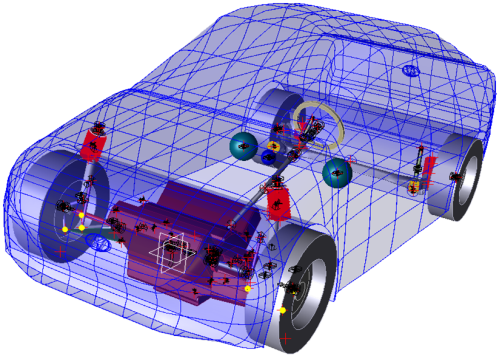

Ansys Sherlock / Electronics Reliability Solutions
- Enhancements have been made to the Sherlock-Workbench/Mechanical workflow to help streamline the reliability assessments of electronic assemblies with multiple printed circuit boards (PCBs). Users can now perform module- and product-level reliability assessments without having to manually import results from multiple boards back into Sherlock.
- The Sherlock-AEDT Icepak workflow has been enhanced to facilitate import of temperature results from multiple PCBs into Sherlock. The improved usability of this workflow allows users to rapidly import temperature data to perform solder fatigue assessments in Sherlock using accurate thermal data from AEDT Icepak simulations. Further, updated export options form Sherlock to AEDT Icepak (such as the ability to export arcs and segments, as well as input and export thermal resistances that can be used with 2R compact thermal models) allow users to create more accurate and efficient PCB models for thermal analyses.
- Ansys Sherlock can now perform thermal conduction analyses as part of the Thermal-Mech workflow (including support for part temperature rise, thermal CSV and thermal image mapping). Thermal conduction support allows users to consider more accurate temperature distributions in PCBs when performing thermal-mechanical assessments in Sherlock.
- New Sherlock Automation APIs support the automation of ICT analyses, including the ability to create, edit, and export test points and text fixtures. Such automation will allow users to rapidly address the reliability impacts of different static loading conditions. Users can go further by performing sensitivity studies involving ICT analyses using Sherlock and optiSLang.
Ansys Forming
- Newly released clamping simulation features. Features include: realistic clamping and gravity, easy and intuitive definition of clamps, closing of clamps sequentially, import of reference geometry for deviation analysis and accurate springback analysis.
- Perform analysis of contact distance and contact pressure
- Improved creation and editing of curves for setup and analysis
- Improved job manager, with added support for: Windows MPP Solver, LS-DYNA start on Linux compute server, LS-DYNA start on HPC

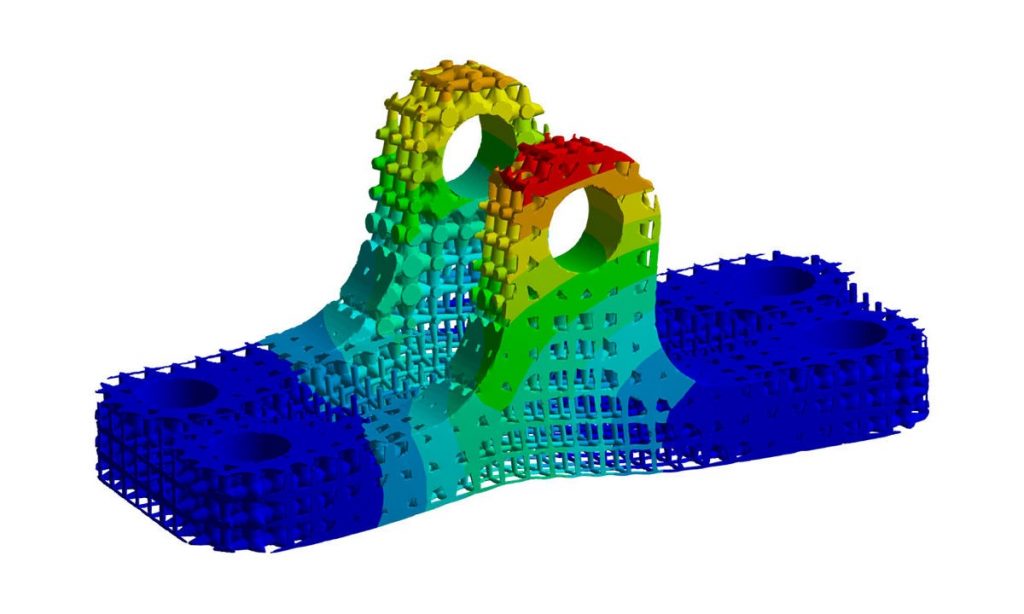
Ansys Additive Solutions
- Workflow improvements include the ability to optimize a distortion compensated model within a simple automated workflow, which improves first time right success, along with the expansion of available process simulations through guided workflows and material models for Metal Binder Jet Sintering.
- Accuracy enhancements include the ability to include Laser Power Bed Fusion (LPBF) scan pattern effects in Workbench Additive. With the consolidation of additive technologies, users now can rapidly increase the fidelity of simulation, capturing localized strain variations in each deposition layer. Scan pattern variations are particularly important in thin wall structures and rapidly repeating laser exposure strategies.
- Introducing a Machine Learning (ML) model for predicting thermal strain that can result in 10X time savings. Users can now easily explore the benefits of varying process setup parameters such as power, speed, and scan vector hatching by accessing the full fidelity of capturing process parameter and scan orientation effects without consuming compute resources for long periods of time.
Ansys Sound
- A new feature available within the SAS (Sound Analysis & Specification) module allows users to assess vibration data as well as acoustic data. Converting vibration data to velocity data to displacement data and vice-versa into signal, spectrum and spectogram allows users to make the link between vibration data and acoustics.
- Within the VRS (Virtual Reality Sound) module, multiple 3D soundtracks can now be played on multiple loudspeaker systems, including an equalizer feature to tune the sound rendering according to the environment/rooms the loudspeakers are in.
- In the ASDforEV (Active Sound Design for Electric Vehicles) module, a new granular sound synthesis technique offers infinite ways to generate interactive sounds controlled in real-time by CAN-Bus driving parameters.
MATERIALS
Ansys 2023R1 brings an enhanced UX with efficiency driving features like the new CAD Connector and Material Calibration app to make Granta MI™ the authoritative source of truth for materials. Updates to data and tools in Granta Selector facilitates fast, accurate early-stage design for Proactive Sustainability: now on Ansys Gateway powered by AWS. Material data is a critical factor in simulation accuracy – Granta offers the latest metals, polymers, PCB and electromagnetic absorbing materials that support accurate physics simulation across automotive, 5G and high-tech.
- Enhanced Ansys Granta MI™ UX use features like: display name localization, an extension of linked tabular data and personalized OneMI page for a best-in-class authoritative source of truth for materials.
- Material Calibration app, also in Granta MI Pro, adds an ‘Initialize’ feature that uses ML algorithms to estimate initial coefficients. Making it easy to improve the accuracy of their simulation.
- The new CAD Connector will save simulation analyst time and guarantee traceability between CAD material records (Siemens NX) and their CAE models (via Ansys Workbench Gateway).
- Updated detail to transport method and static mode data along with customizable joining and finishing process data bring a new level of accuracy for the Eco Audit tool in Ansys Granta Selector and Granta EduPack. Granta Selector is now available in Ansys Gateway powered by AWS.
- Added polymers and metals data include specialist non-linear simulation-ready data from the likes of Sabic and Kuraray. 300+ new PCB and Electromagnetic absorbing materials bring new solutions for applications from 3D-IC to sensor, radar and 5G across high tech and automotive.
- Stay REACH compliant by tracking and phasing out 3,500+ PFAS substances available within the dedicated Restricted Substances module in Granta MI.
ELECTRONICS
Ansys Electronics continues to demonstrate its Technology leadership in computational electromagnetics. Improvements in simulation performance, meshing, integrations with other Ansys tools, automated workflows and modeling capabilities extend Ansys leadership in electromagnetic simulation and computational multiphysics for designing high speed PCBs, electric machines, antennae, radar and other electronic systems.
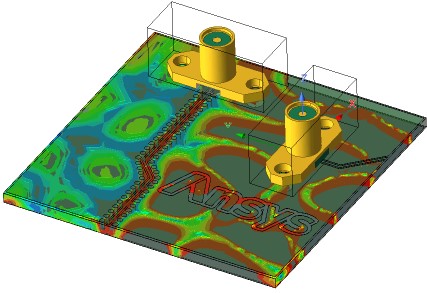
Ansys HFSS
- Layout Component Placement Enhancement in HFSS 3D – Improved workflow to easily place Layout components in HFSS 3D to create extremely complex assemblies in a few minutes.
- HFSS Parallel Component Adapt for 3D Component Array – Accelerate finite array simulations by adapting individual 3D component cells of an array in parallel.
- Improved HPC performance for distributed mesh fusion solver – Improves hardware utilization and simulation time when mesh fusion is used.
Ansys Maxwell
- Induction Machine ROM-based Efficiency Map – by utilizing Reduced Order Modeling (ROM) and including it in the electric machine toolkit, a FEA solution is effectively squeezed down to a circuit simulation, providing a significant simulation performance enhancement.
- Performance improvements for quasi-static solvers – this set of enhancements is particularly helpful in PCB simulations where the conduction path includes complex geometry (which inevitably results in a large number of excitations.) In applications such as portable devices, computers, switch mode power supply devices, etc., where multi-layer PCBs allow for much higher component density, fine conductive traces are needed. Enhancements to the quasi-static solvers reduces the CPU time assignment of the magnetic field, with processing that occurs at the beginning of solution reduced from hours to minutes.
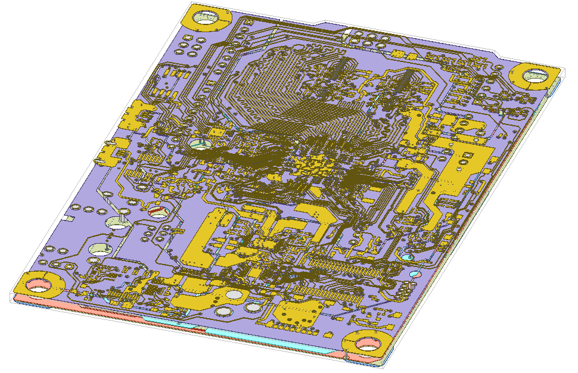
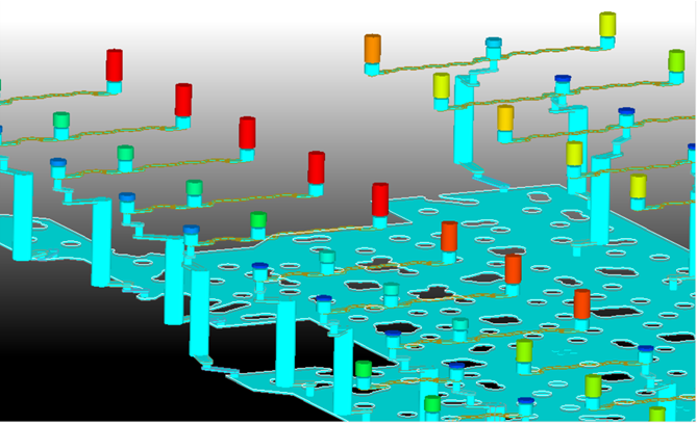
Ansys SIwave & Ansys Q3D Extractor
- There are a number of SIwave enhancements & new components, including a new DC IR plot display which clarifies IR drops across complex designs.
- Q3D solver improvements for power electronics & PCB apps – the distributed computing memory solver for CG extraction can now handle bigger designs and run faster simulations with them. There are also particular benefits to power electronics, as the DC to AC transition region solver for AC RL extraction now has a specific solver for this nonlinear region, resulting in higher accuracy than the previous blended results of the separate DC and AC solvers.
Ansys Icepak w/ AEDT
- New Meshing Enhancements – stair step meshing (2D multilevel) that captures individual layers and details, resulting in a more robust PCB meshing which functions on both stacked and layered structures. The enhancement is also incorporated into the sliding bar mesh.
- Enhanced post processing for thermal fields resulting in a 2-3X speedup in performance over the 22R2 version.
- Compact Thermal Model (CTM) Version 2 support. This enables code simulation bidirectionally with Redhawk-SC ET when utilizing encrypted TSMC technology. By using Ansys Icepak, users can capture environmental effects (fans/airflow and convection/radiation) and then return this thermal data to RHSC-ET.
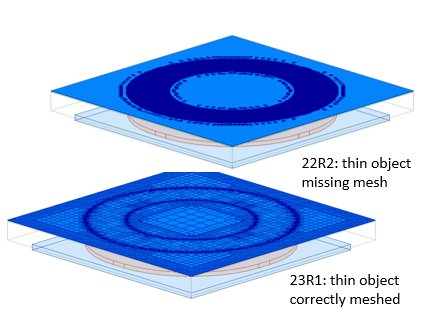
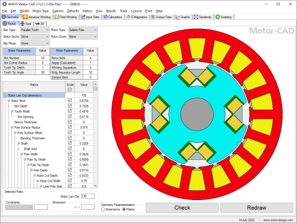
Ansys Motor-CAD
- NVH Enhancements – available now for Induction Machines, including transient calculation improvements and across the board performance improvements. Included are improved integrations with Ansys optiSLang, Ansys Mechanical and Ansys Sound to provide further support for NVH analysis and simulation.
- Automated workflows with Ansys Discovery, Ansys Mechanical, Ansys Maxwell and Ansys Fluent model export and setup for improved computational Multiphysics support.
- The addition of various rotor geometries for use in parameter-driven optimization using Ansys optiSLang.
- Multiple improvements in hairpin winding modeling.
Ansys EMA3D Cable
- New API and interoperability features with Ansys optiSLang, Ansys ModelCenter, Ansys STK or a user Python script (pyEMA3D.) This feature allows 3D geometry and cables to be programmatically adjusted and the simulation re-run many times without user interaction.
- New automated workflows that enable full-device and full-vehicle simulation with automatic material assignment from Ansys Granta, automatic meshing and automatic post-processing with standard electromagnetic compatibility (EMC) limit curves.
- A new Multiple Cable Harness Tool that permits automatic import of additional cable database formats, automatic joining of different harnesses at connectors and the rapid assignment of cable termination circuit elements.
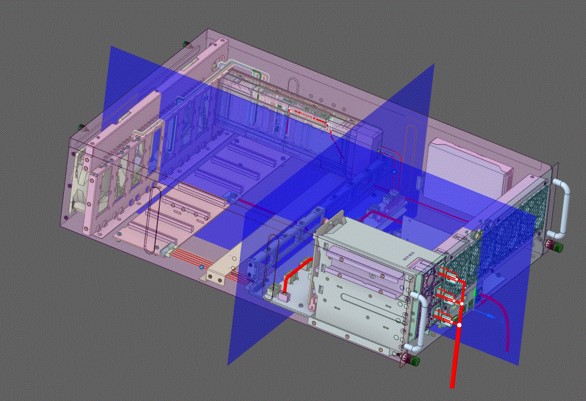
Ansys EMA3D Charge
- New integrated data visualization capabilities within Ansys Discovery complete the analysis of simulation results in the end-to-end workflow of EMA3D Charge. Engineers now have optimized access to all 3D, time-varying variables of the EMA3D Charge physics solvers through a GPU accelerated graphics visualization toolkit.
- New integration with System Coupling 2.0 allows for the exposure of plasma physics variables in EMA3D Charge to other Ansys physics solvers, with an emphasis on Multiphysics coupling to Ansys Fluent for the modeling of heat generation, convection and dissipation in arc modeling, or plasma dynamic models in PE-CVD applications.
- New seamless integration with Ansys STK enables users to efficiently analyze radiation shielding dose and internal charging in 3D, using the time-varying radiation models available along an ephemeris defined in an active STK session.
All information has been prepared to the best of our knowledge. Data without guarantee.
3D DESIGN
Ansys 2023 R1 expands Discovery’s astonishing Live physics, innovative user experience, and powerful modeling tools making it a critical piece of the Ansys digital simulation thread and the best place to start simulation for every engineer and analyst. Breakthrough accuracy improvements in Live structural physics increase confidence and reduce GPU memory requirements for thin structures. Subdivision geometry modeling provides an entirely new way to create and edit complex parts making “what-if” changes possible for any CAD including topology optimization results. Lastly, added physics features improve productivity and fidelity for structure analysis, antenna ideation, rotating devices, and electronics cooling applications while maintaining a seamless connection to the Ansys product portfolio for more advanced studies.
Ansys Discovery
- Increased accuracy for thin structures – Improved accuracy for Live structural physics increases confidence in fast simulation results, while simultaneously reducing GPU memory requirements by up to 10x.
- Subdivisional Modeling – This highly innovative new feature makes editing any CAD possible for the first time especially for smooth organic features and parts. Reduce complex “what if” geometry changes from hours or days to seconds. Top application areas include parametric modeling of turbine blades or modification and cleanup of topology optimization shape results.
- Redesigned Workflow – Simulations are only as useful as the insights that can be drawn from them, which is why Discovery continues to redefine what a simulation user experience should be. Automated bolt checking, user-defined limits for measured values, and an improved legend present results with engineering meaning rather than as complex simulation quantities. Custom shortcuts, pop-up units, and a redesigned topology optimization workflow increase productivity for every engineer and analyst.
All information has been prepared to the best of our knowledge. Data without guarantee.
FLUID
Fluids product line is pushing the envelope of performance, fidelity, sustainability, and productivity for computational fluids dynamics (CFD) simulations. The full release of the multi-GPU solver in Fluent is unleashing the power of multiple GPUs for a broad spectrum of applications and the accurate hydrogen modelling throughout its value chain is helping to address comprehensively the sustainability challenges in transportation and energy industries. Workflow and automation improvements across the entire product line are resulting in faster, more efficient simulations, thus reducing the design cycles. To see which feature can benefit you, check out the detailed list below.
Ansys Fluent
- Run broad spectrum of complex industrial applications natively on GPUs substantially reducing solve time and total power consumption, with results showing 6 high-end GPUs provide the same performance as more than 2,000 CPUs.
- This full release added support for species transport, non-stiff reacting flows and enhanced numeric for LES simulations.
- Support for sliding mesh and compressible flows simulations has also been added in addition to the full released features (beta).
- The new Proton Exchange Membrane (PEM) and Alkaline electrolysis models for green hydrogen production and the extended Polymer Electrolyte Membrane (PEMFC) and Solid Oxide (SOFC) models for hydrogen consumption in Fuel Cells enable accurate hydrogen simulations throughout its entire value chain.
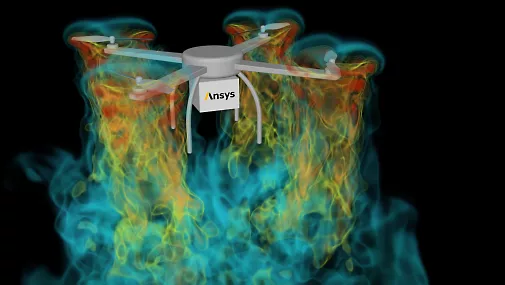
- A new embedded workflow for parametric design optimization and morphing enables to run parametric studies and design optimization, including morphing, directly within the Fluent interface thus speeding up design cycles.
- A new embedded PyConsole brings PyFluent directly in the Fluent interface with support for centralized Python journaling, full scheme/TUI to python journal translation and usability features like auto-complete and quick search of Fluent commands (beta).
- A Virtual Blade Model (VBM) includes the effects of 3D rotors as momentum source terms in the governing equations, increasing automation and productivity for aerospace and energy applications (beta).
- Access High-Speed Numerics (HSN) within the Fluent Aero Workspace with seamless setup and improved robustness and convergence for all flight regimes.
- Perform advanced electronics cooling analyses that can include condensation, evaporation and more, with a new direct ECAD workflow for printed circuit board (PCB) that enables the import of an ECAD directly from the Fluent interface without additional software required.
- Compute Optical Path Length / Optical Path Difference (OPL/OPD) due to aero-optical aberrations directly in Ansys Fluent and to export them to OpticalStudio for more sophisticated optical analyses (beta).
- Generate photo-realistic renderings of your simulations with live preview, custom environments, material editor, light presets, etc. with the new OSPRay raytracing engine available in Fluent (beta).

Ansys CFX and Turbo Tools
- A new plugin streamlines the workflow for using the CFX Solver in optiSLang, enabling to run design points concurrently and to leverage optiSLang’s parametric licensing.
- You can now add blade blends, create partial tip geometry at the hub/shroud and adjust the blade stagger angle directly in TurboGrid. Use profile/curves as the input geometry, then TurboGrid will automatically create the high-fidelity CAD with the additional blade features and produce a highquality mesh.
Ansys Chemkin-Pro
- Accurately simulate Zel’dovich/von Neumann/Döring (ZND) explosive detonations with a new end-toend workflow that includes enhancements in the treatment of the incident shock speed in the Chemkin-Pro shock model.
- A new Plasma Multiphase Perfectly Stirred Reactor (PSR) enables accurate prediction of plasma-water processes like the carbon-free ammonia production and the removal of toxic substances (beta).

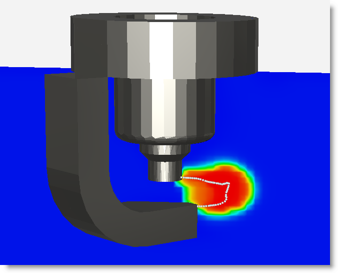
Ansys Forte
- A new Arc Channel Tracking (ACT) spark model improves accuracy and enables to capture short-circuit and restrike events when simulating ignition and flame propagation in IC Engines.
- A new moving monitor probe with prescribed movement allows tracking properties of a fluid pocket as it moves from the suction to discharge ends in pumps and compressors simulations.
- A new runtime framework providing time-averaged statistics for any spatially resolved flow variable improves productivity for Large Eddy Simulations (LES) and quasi-steady conditions analyses.
Ansys Rocky
- Fully integrated SPH (Smoothed-Particle Hydrodynamics) solver with upgraded unified user interface (setup and post processing) to create a single SPH-DEM workflow environment. The new release provides an efficient simulation workflow for modeling particle-laden free surface flows and adds heat transfer between the particles, fluids, and walls.
- Extending simulation domain flexibility to include inlets and outlets for both particles (DEM) and fluids (SPH elements) provides a range of flexibility to set up particle and fluid injections, accelerate geometry and problem set up and easy accounting of mass flows within the domain and the boundaries.
- Expanded coupling with Ansys Fluent highlighted by usability improvement through Rocky-Fluent two way coupling in Ansys Workbench. The new release also provides more accurate heat transfer calculations for particle-laden flows by including particle-wall heat transfer models.
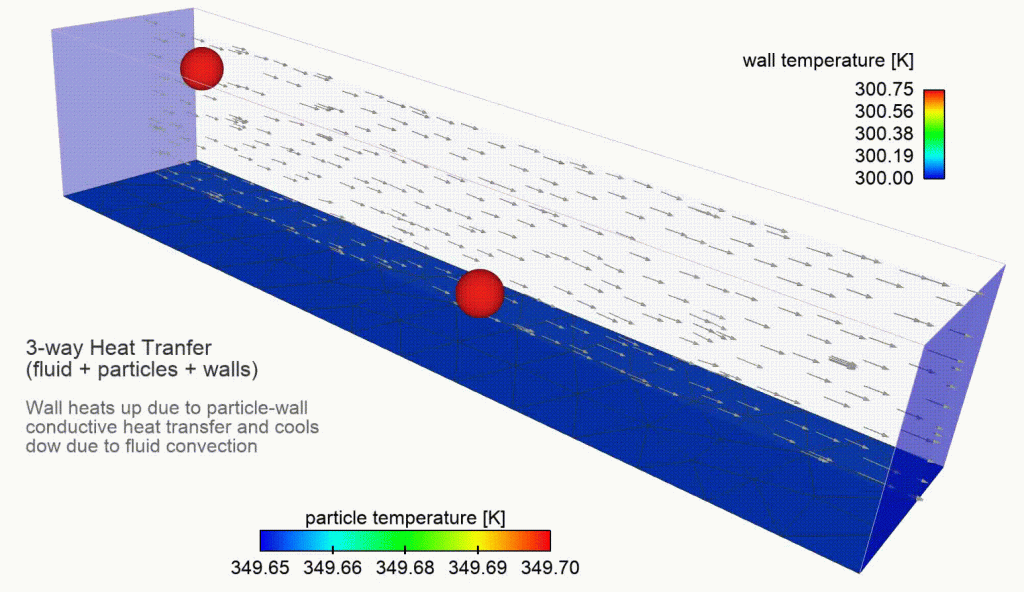
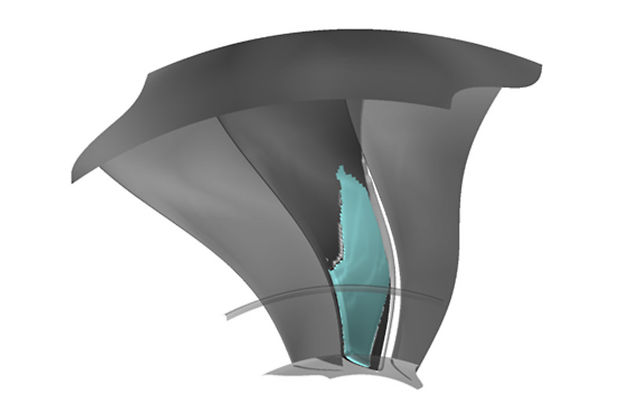
Ansys FENSAP-ICE
- Accurately capture local blockage and flow redirection to uncontaminated parts of wire mesh screens (e.g., Engine FODs) with a new Screen Icing Model accounting for total pressure losses in FENSAP-ICE.
- Perform what If studies, sensitivity analysis, build custom design of experiments and more with the new Multiphysics Parametric Exploration in Fluent Icing.
- Perform steady state simulations of electro-thermal and hot air anti-icing systems with a simplified workflow directly in Fluent-Icing (beta).
Ansys Ensight
- Improvements in rendering, including Lighting Presets, Light Attenuation and SPH OSPRay rendering increase the end-user productivity and usability.
- The OSPRay engine can now get lighting instructions to ray trace the geometry from HDRi images for a more realistic rendering of simulation results (beta).
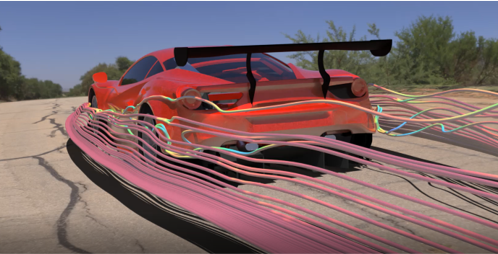
Ansys System Coupling
- Introducing PySystemCoupling package for easy access to System Coupling, allowing flexible integration between other PyAnsys products as well as wider Python developer ecosystem.
- Add support for mapping of complex mode shapes from Mechanical modal analysis to CFD blade flutter analysis to perform aerodynamic damping analysis.
- User interface improvements, including ability to view participant transcripts in the System Coupling graphical user interface.

